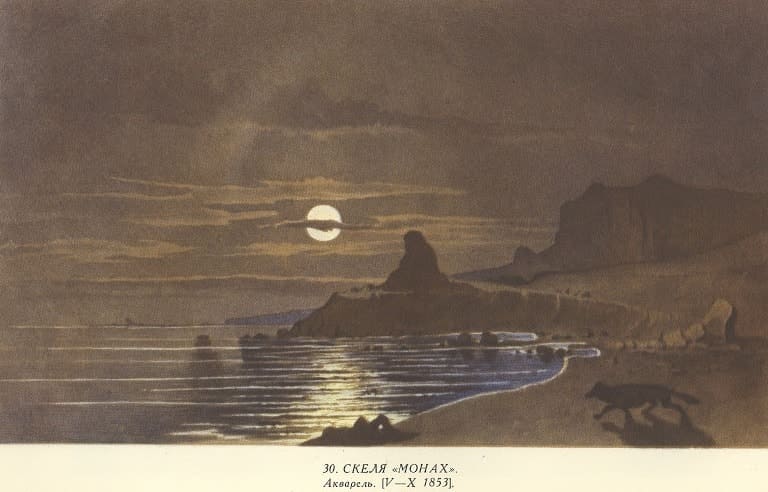Вы здесь
Adamtash - rock monk.

Tours to natural attractions of Mangyshlak
“Not far from the Novopetrovsky roadstead, on a rocky steep seashore, there is a cliff eighty feet high. Because of her shape she was called "Monk"
Polish artist Bronislaw Zaleski.
Trip to Bautino
Not far from the twin villages of Bautino and Atash, on the western side of Bautino Bay, lie the mountainous cliffs of the Kyndykstau area. Tourists call this part of the coast the Valley of Fantasy. Of course, here you can see intricately shaped rocks, blocks of stone that look like dinosaurs, stone people, and monsters.
Not far from the sea there is a block of stone that resembles an old man with a long beard sitting thoughtfully. Artisan nature sculpted such a work of art! Some call this stone sculpture Adam-tash, others - Mulla-tash, or stone monk. Then the origin of the name of the area “Atash” from “Adam-tash” (“man-stone”, “man-mountain”) becomes clear.
There has long been a legend among the people that a mullah lived on Cape Karagan with his married son. The daughter-in-law tended cattle, and the husband went to sea to fish. One day a strong storm broke out at sea. The unfortunate fisherman was carried away by the heartless elements, and no one saw him again.
Less than a year had passed before the old mullah began to harass his daughter-in-law. In great despair, the woman jumped from the top of the Atash rock into the abyss. Since then, people have cursed the old man. The enraged mullah, having understood the reason for people’s curses, went to his daughter-in-law’s grave and began to level it so that people would forget about his sin and about the woman who had known the grief of disappointment.
They say that local old-timers saw an old man raging at the grave of an unfortunate woman. And the Almighty punished the sinner by turning him into stone. From afar you can see this stone sculpture as an instruction to future generations. Two small streams flow from the side of the block of stone.
People say these are the daughter-in-law's tears. Anyone who has visited these places at least once will appreciate the sketches of the Polish artist Bronislaw Zaleski. Zalessky was imprisoned here in exile for many years for grueling trials in the desert, captivity, and ordeal. It’s amazing how this exile had enough wealth of feelings and breadth of understanding to feel the beauty of the region, hidden from view in the rocks and gorges.
Here is what Zalessky wrote about this rock:
- “Not far from the Novopetrovsky roadstead, on the rocky steep shore of the sea, there is a rock eighty feet high. Because of her shape, she was called "Monk".
It stands like a stone guardian of the desert, surrounded by individual intricately shaped rocks scattered along the coast. And at the foot of the sea the sea always roars. Residents of the Novopetrovsky fortification, with the arrival of spring, as soon as the ice that binds the sea disappears, like to climb this rock to see what is happening in this world, peer into the distance, at the horizon line and wait for the first sail to appear.
Not a single vessel, not even a small fishing boat, sticks to the foot of the cliff due to the abundance of underwater rocks in the surrounding waters. If a wolf comes here in search of carrion, an eagle will spread its wings here. A traveler wandering here alone is at first seized with horror, terrible ghosts appear, and it seems that nature itself has designated this place for a Sabbath of witches and devils.”
Another artist, Taras Shevchenko, captured this sculpture of nature in his drawing, calling it “Monk” (“mullah-tash”). In this stone monk, Kobzar saw himself, imprisoned for seven long years in a desert region. An unforgettable impression from this place: steep cliffs, a playful wave of the sea, a narrow path between the rocks and the sea and a huge block of stone that inspires fear.

Authority:
Natalya Zaderetskaya. "Tupkaragan - the cradle of Mangistau."
Photos by:
Alexander Petrov.







